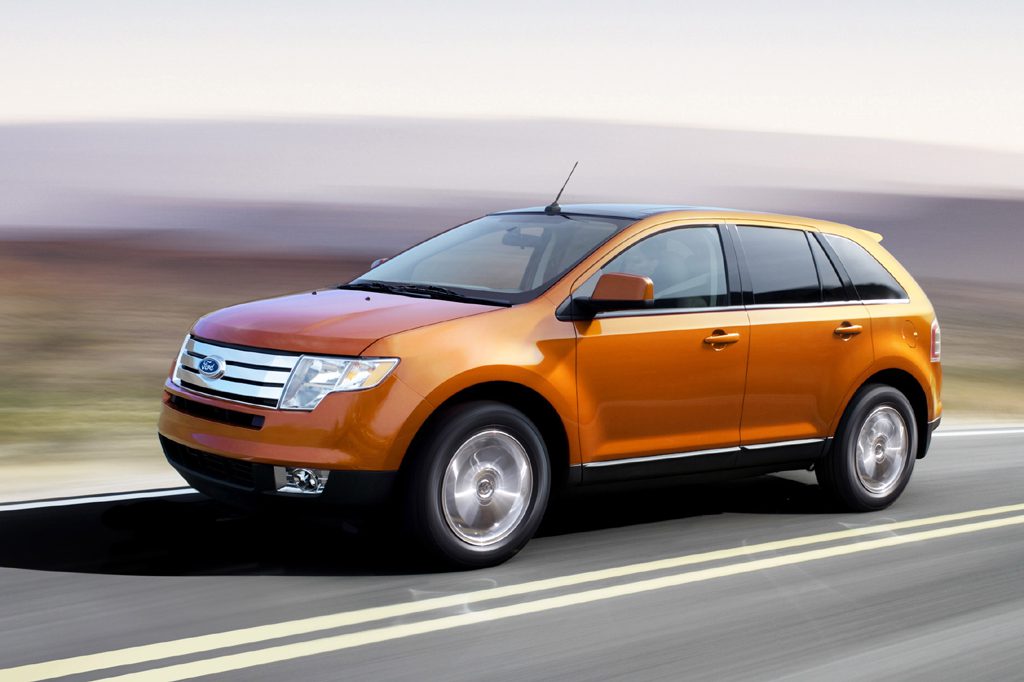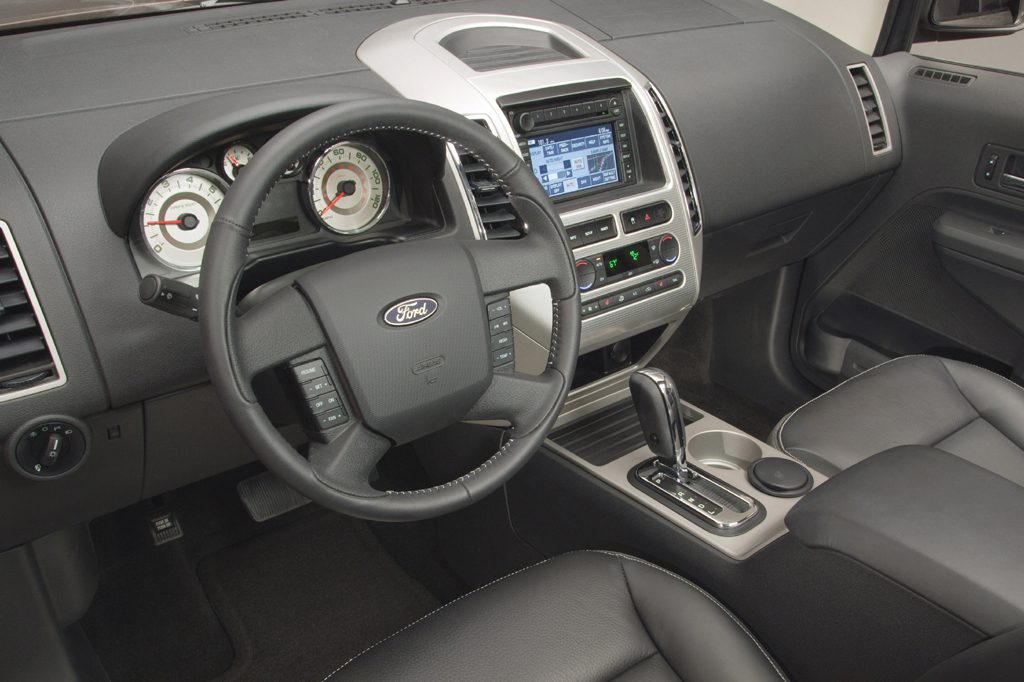| Midsize SUV; Built in Canada |
|
|
| Good condition price range: $5,200 – $29,900* |

2007 Ford Edge

2007 Ford Edge

2007 Ford Edge

2007 Ford Edge
| Pros: |
|
| Cons: |
|
Ford Motor Company had a lot riding on the success of its newest crossover SUV, and the Edge impresses for its responsive powertrain, car-like ride, and generous passenger and cargo room. New-car base prices have been competitive, but quickly escalated with options. Give Edge a look, but consider an SE model or a judiciously equipped SEL for the best dollar value.
Overview
Ford introduced a new car-type midsize crossover SUV for 2007, a five-passenger wagon based on the same platform used for the Fusion sedan. The new Edge came in SE and SEL models. Both could have either front-wheel drive or all-wheel drive (without low-range gearing). The sole powertrain was a 265-horsepower V6 and a six-speed automatic transmission.
Antilock braking and traction/antiskid control were standard, along with front side airbags and curtain side airbags, which included rollover sensing. Optional for the SEL was Ford’s panoramic Vista Roof-a sliding glass sunroof over the front seats and a fixed rear panel. Other SEL exclusives included an optional navigation system, DVD entertainment, leather upholstery, and 18-inch wheels.
Second-row 60/40-split reclining seats folded to make a level load floor. With the front passenger seat folded, an Edge could hold items up to 8 feet long. Rear seats folded using a one-hand manual release or an automatic remote release, accessible from the cargo area. A laptop computer fit into the front console, and an MP3-player jack was provided. Each Edge contained 20-ounce cupholders in front-door map pockets, plus what Ford called “super-size” cupholders in the console and rear armrest. Heated front seats were available.
Lincoln got a luxury-trimmed version of the Edge, called the MKX. Competitors for Ford’s Edge included the Honda Pilot, Nissan Murano, and Toyota Highlander, as well as the Saturn Outlook.
Yearly Updates
| 2008 Edge A new top-end Limited edition arrived for 2008 with the same powertrain as other models. All 2008 Edges got a revised exterior tailgate handle. A power-closing feature for the tailgate was optional. Ford’s Sync feature was newly available, too. This software system offered voice-activated control of cell phones and digital music players. Options for 2008 included power-folding rear seatbacks and new 20-inch wheels. |
| 2009 Edge The 2009 Ford Edge added a new Sport model to its lineup to join the existing SE, SEL, and Limited. |
| 2010 Edge The 2010 Ford Edge lineup saw no major changes pending a major freshening due in calendar 2010 as a 2011 model. |
| 2011 Edge The 2011 Ford Edge got a major freshening, with revised styling, a new interior, and more power. The 3.5-liter V6 gained 20 horsepower to 285, and a larger 3.7-liter V6 was added for the Sport model with 305 hp. |
| 2012 Edge For 2012, the Ford Edge added an EcoBoost 2.0-liter turbocharged engine as an option on front-drive models. |
| 2013 Edge Updates for 2013 were fairly modest. Ford made all-wheel drive available for public purchase on the entry-level model; previously only fleet customers could order this configuration. The available MyFord Touch infotainment system continued to receive upgrades designed to simplify the interface and improve responsiveness. |
| 2014 Edge The 2014 Edge was largely unchanged in its last year before a redesign. |
